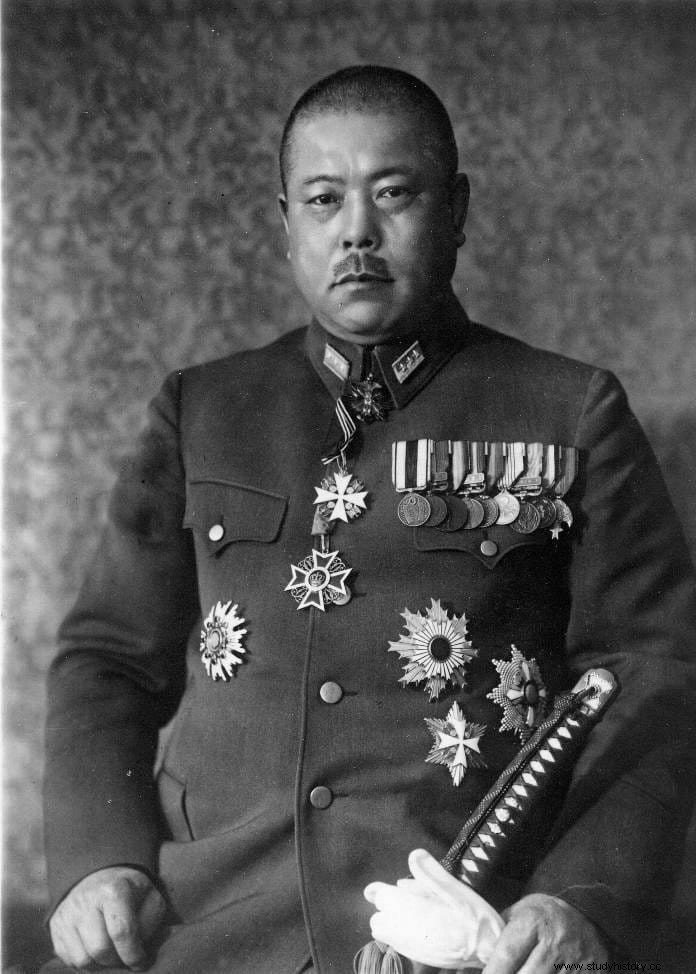Like the Nazis in Europe, the Japanese were not short on looting works of art, jewelry, and historical documents from all the areas they came to control in Southeast Asia during World War II. Many of these objects were never recovered, which gave rise to the Yamashita Treasure theory. .
Yamashita's Treasure (also known as Yamashita's Gold) is the name given to the supposed war booty hidden by General Tomoyuki Yamashita (nicknamed the Tiger of Malaysia ) in caves, tunnels, and underground complexes in the Philippines. This belief led countless treasure hunters to investigate relentlessly for more than fifty years. However, its existence is denied by most historians.
Among those who do defend its existence are Sterling and Peggy Seagrave, who published the book The Gold Warriors:Yamashita's Treasure and the Financing of the Cold War, implicating the Yakuza and Emperor Hirohito in the looting plot. This would have put his own brother, Prince Yasuhito Chichibu, head of the secret organization Kin no yuri in charge of the operation. .

Unfortunately all those who supposedly could know the whereabouts of the treasure died during the war, or were later tried for war crimes and executed. Yamashita himself was executed on February 23, 1946 by the US Army.
It is believed that the loot was concentrated in Singapore during the armed conflict, being transferred near the end of it to the Philippines. The ultimate goal was to move him to Japan once the war was over. The Seagraves think that many of the ships sunk by the Americans in the vicinity of the Philippines in the last moments of the war could have been loaded with parts of the treasure.
Other historians say it makes little sense that the Japanese would move the treasure to the Philippines as late as 1943, when they no longer had maritime control. The best thing would have been to hide it in Taiwan or China, for example.
In March 1988, a Filipino treasure hunter named Rogelio Roxas filed a lawsuit against former President Ferdinand Marcos and his wife, Imelda, in a court in Hawaii. He claimed to have found in 1961 the son of a Japanese soldier who would have provided him with a map with the location of the treasure. He would have even managed to contact one of Yamashita's interpreters during the war, who would have confirmed the location of the loot.
Roxas claimed to have thereby discovered an underground chamber near Baguio City, where he found bayonets, samurai suits, radios, and the remains of a Japanese soldier. In addition there was a gold statue of Buddha, almost a meter high, and numerous boxes with gold ingots. He took the Buddha and 24 ingots, sealing the chamber until he could return for the rest.
It was then that, according to him, he was kidnapped by order of President Marcos, who would have kept the gold, and imprisoned for a year.
Roxas died in 1993 without him having finished the trial. However, in 2006 the Ninth Court of Appeals of the United States ended up agreeing with him in his litigation, now against Imelda Marcos, as Ferdinand's heir. In the sentence, the court explicitly affirmed that there was conclusive evidence that Roxas had found a part of Yamashita's treasure, although he could not establish the total value of what was found.
Strangely, the exact location of the caves discovered by Roxas never transpired. His descendants created a company called Golden Buddha Corporation.
Currently, the Office of the Department of Natural Resources of the Philippines continues to issue permits annually to the prospectors who continue to chase the treasure.
